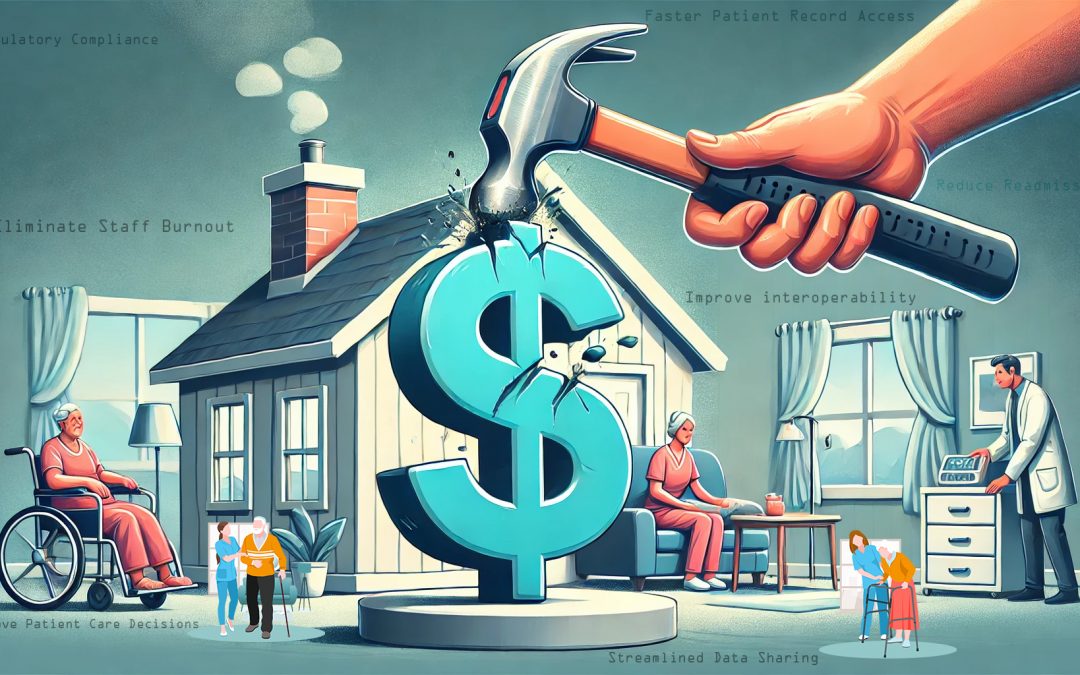According to the World Health Organization (WHO), in 2021, global healthcare spending amounted to $9.8 trillion—10.3% of the worldwide GDP. It’s no secret that healthcare costs have been steadily rising worldwide, but each year, $1.8 trillion of these costs result in little to no improvements in positive health outcomes. Although the pandemic greatly influenced these numbers, they also reflect significant inefficiencies that inflate costs without providing benefits. Luckily, digital collaboration tools have the potential to reduce unnecessary healthcare costs in several ways. By eliminating inefficiencies in healthcare delivery, we may see potential savings that reach $1 trillion annually in the United States alone. Here, we’ll explore how new and improved digital collaboration tools can contribute to lowering the financial burden on healthcare systems.
7 Ways to Reduce Operational Costs in Healthcare with Digital Collaboration
One of the most impactful ways digital collaboration tools reduce costs is by simplifying operations and enhancing workflow efficiency. Digital communication platforms enable healthcare teams to collaborate seamlessly, improve coordination, and streamline processes, all of which contribute to lower operational expenses. These tools significantly improve both care quality and operational costs by reducing administrative burdens, minimizing duplicative efforts, and improving response times.
Digital tools also contribute to long-term cost savings by improving coordination and preventing unnecessary hospital readmissions. Here is more information on how digital collaboration tools are reshaping healthcare, enabling better care at a lower cost.
1. Increases Accuracy of Patient Records
Accurate patient records are an essential component of effective healthcare delivery. Although EHRs have drastically improved accuracy compared to paper-based systems, information can still get overlooked without real-time communication. Digital collaboration tools help bridge the gap, ensuring that every care team member has access to the most updated information. For example, instant messages can be sent to surgeons or doctors once a patient’s lab results arrive. This can reduce the risk of delayed care or unnecessary and redundant tests, thus decreasing operational costs.
By utilizing digital collaboration systems, healthcare providers can also significantly reduce the risk of inaccuracies. This can revolutionize patient outcomes, enhancing the quality of care and creating more efficient resource usage.
2. Improves Patient Care and Decision-Making
Research on patient-level data from over 190,000 hospitalizations across 15 U.S. hospitals found that when patients with clinical needs for intensive care are placed in general wards, their hospital stays tend to be longer, and they face higher readmission rates. These inefficiencies drive up healthcare costs and often lead to poorer patient outcomes.
With digital collaboration tools and communication platforms, healthcare providers can make more informed decisions based on real-time data. Timely access to patient information also enables early interventions to prevent conditions from worsening, reduce the need for more intensive care, and shorten hospital stays. There are also several other ways digital collaboration can facilitate better patient care and overall satisfaction. In the long term, this translates to improved health outcomes and lower healthcare costs.
3. Reduces Readmission Rates
Hospital readmissions are a significant cost driver in healthcare, often resulting from miscommunication, incomplete follow-up care, or gaps in the transition from hospital to home care. Digital collaboration tools like secure messaging platforms and telehealth services allow healthcare providers to stay connected with patients after discharge. This enables better tracking of patient progress alongside timely notifications that can help prevent complications that may otherwise lead to readmissions. Maintaining clear and consistent communication with patients can also improve the likelihood of them adhering to post-discharge instructions and medications, resulting in better patient outcomes.
4. Enhances Data Sharing, Communication, and Collaboration
One of the greatest challenges in healthcare is ensuring seamless communication and collaboration among different providers, whether it be doctors, nurses, surgeons, or lab technicians. Delays in accessing patient information and test results can result in missed opportunities for early interventions, leading to more expensive treatments in the future. Digital collaboration systems that are shared across the healthcare ecosystem, from hospitals to home-based care or outpatient clinics, improve the flow of information, enabling more efficient care delivery.
By allowing healthcare providers to share real-time patient data, digital collaboration tools reduce redundancies and minimize errors, helping to lower operating costs. Better coordination also reduces the need for more intensive treatments and helps streamline care, preventing costly inefficiencies such as duplicated tests or conflicting treatment approaches.
5. Improves Interoperability Between Different Departments and Organizations
Fragmented care often leads to higher costs and poor patient outcomes. When departments or organizations don’t have access to the same patient data, they risk duplicating tests, providing conflicting treatments, or missing critical information about a patient’s condition. These inefficiencies are costly, both in terms of resources and patient health.
Digital collaboration tools improve interoperability between departments and organizations, ensuring patient data is readily available to all necessary parties. This enhances care coordination and ultimately leads to better outcomes at a lower cost.
6. Decreases Staff Workload, Reducing Burnout on Administrative Tasks
The demand for healthcare services has risen dramatically in recent years, a trend accelerated by growing populations and the long-lasting effects of the pandemic. However, more patients mean more administrative tasks, which translates to increased workloads for healthcare staff. Because of this, burnout among healthcare workers has become a significant issue, contributing to staff turnover and adverse health outcomes for both providers and patients. These problems affect patient care and drive up costs of various health systems.
Digital collaboration tools can alleviate these pressures by optimizing data entry, scheduling, and patient documentation. Online patient scheduling systems and automated administrative processes help reduce the time spent on paperwork, allowing healthcare providers to focus on delivering care. This enhanced efficiency can be a tremendous catalyst for cost savings.
7. Enhances Regulatory Compliance, Reducing the Risk of Legal Fees
In the United States, healthcare providers are subject to strict regulations, such as the Health Insurance Portability and Accountability Act (HIPAA). Non-compliance with these regulations can result in hefty fines and legal battles while leaving long-lasting damage to a provider’s reputation. Over the years, this can lead to lower stakeholder presence, decreased costs, and, eventually, the collapse of an organization. When properly used, digital collaboration tools can help organizations stay compliant by automating regulatory requirements and ensuring patient safety.
Many systems can incorporate built-in checks, automated alerts, and encryption measures to handle patient data securely. By minimizing the risk of non-compliance, healthcare organizations can avoid costly legal fees and protect their patients’ sensitive information. However, it’s important to choose digital tools that include two-factor authentication, encryption, access controls, and audit tools to further reduce the risk of data breaches.
How to Choose the Right Digital Collaboration Tool for Your Healthcare Organization
Selecting the right digital collaboration tools for your healthcare organization requires careful consideration. The tools you choose should not only address immediate operational needs but also align with long-term goals for improving patient outcomes, streamlining workflows, and reducing costs. To help, consider the following steps:
- Identify your organization’s need
- Look for tools that directly address challenges
- Ensure that new digital tools can integrate with any existing systems
- Evaluate the user-friendliness of digital tools
- Opt for platforms with intuitive interfaces and customizable features
- Consider security and complaint—HIPAA compliance is non-negotiable
- Look for scalability
- Assess the level of support given and training requirements
- Evaluate cost-effectiveness
- Look for analytics capabilities
When looking for the most powerful digital communication and collaboration platform for your healthcare operations, turn to Buzz. Buzz is a HIPAA-secure platform that simplifies real-time, on-the-go communications between healthcare providers and patients. It supports commonly used communication modalities between healthcare professionals, including texts, dictation, private calls, audio, images, reports, and video sharing. By consolidating these features into a single platform, Buzz eliminates the need for multiple communication tools, reducing confusion and burnout and enabling healthcare teams to focus on delivering exceptional patient care.
Learn more about Buzz features or contact us to see why Buzz is the most feature rich, easiest to adopt and easy on your budget with pricing equal to a cup of coffee!

